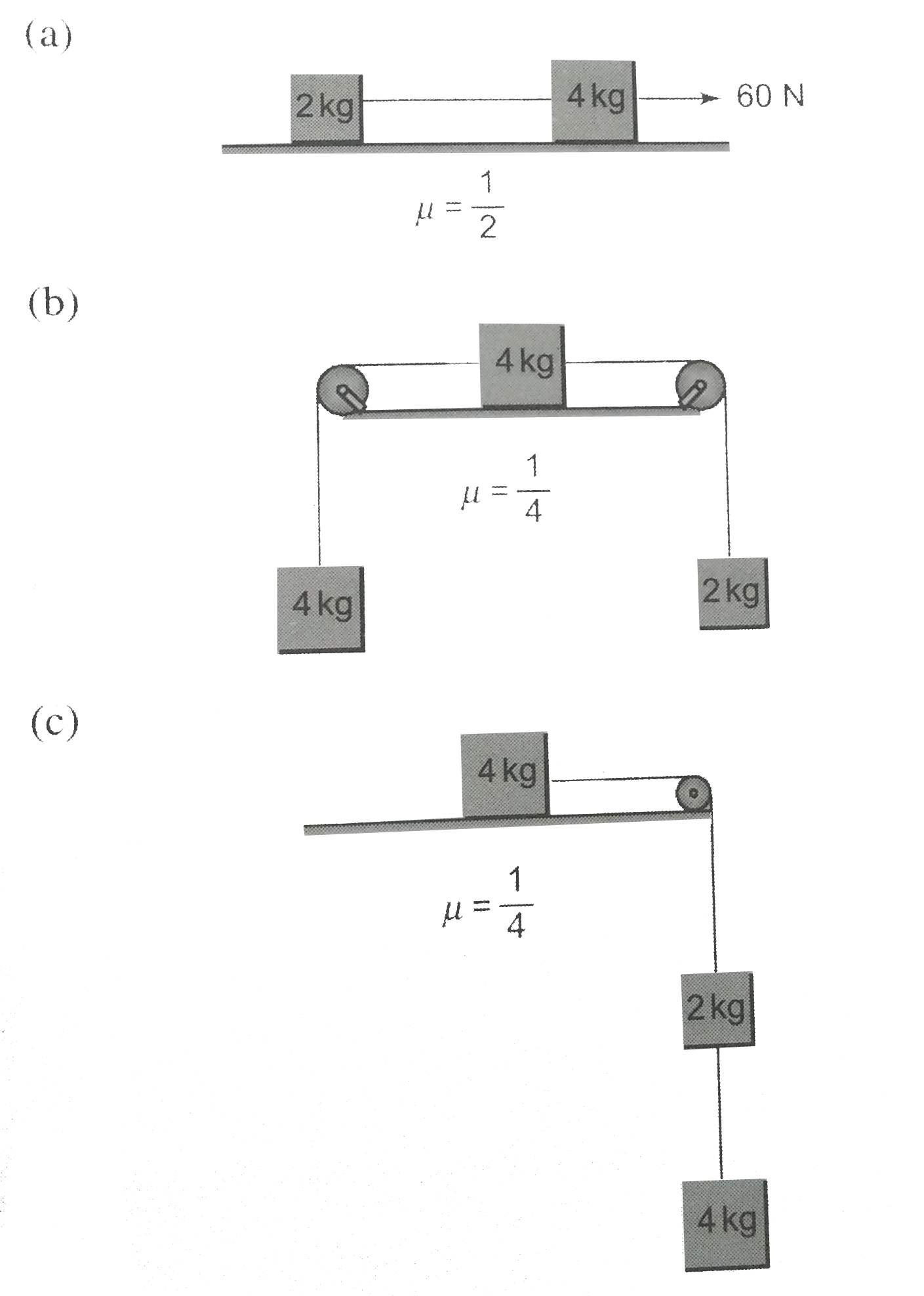Find the acceleration and tension in the string in the following cases . The pulley and string are massless.
(a) 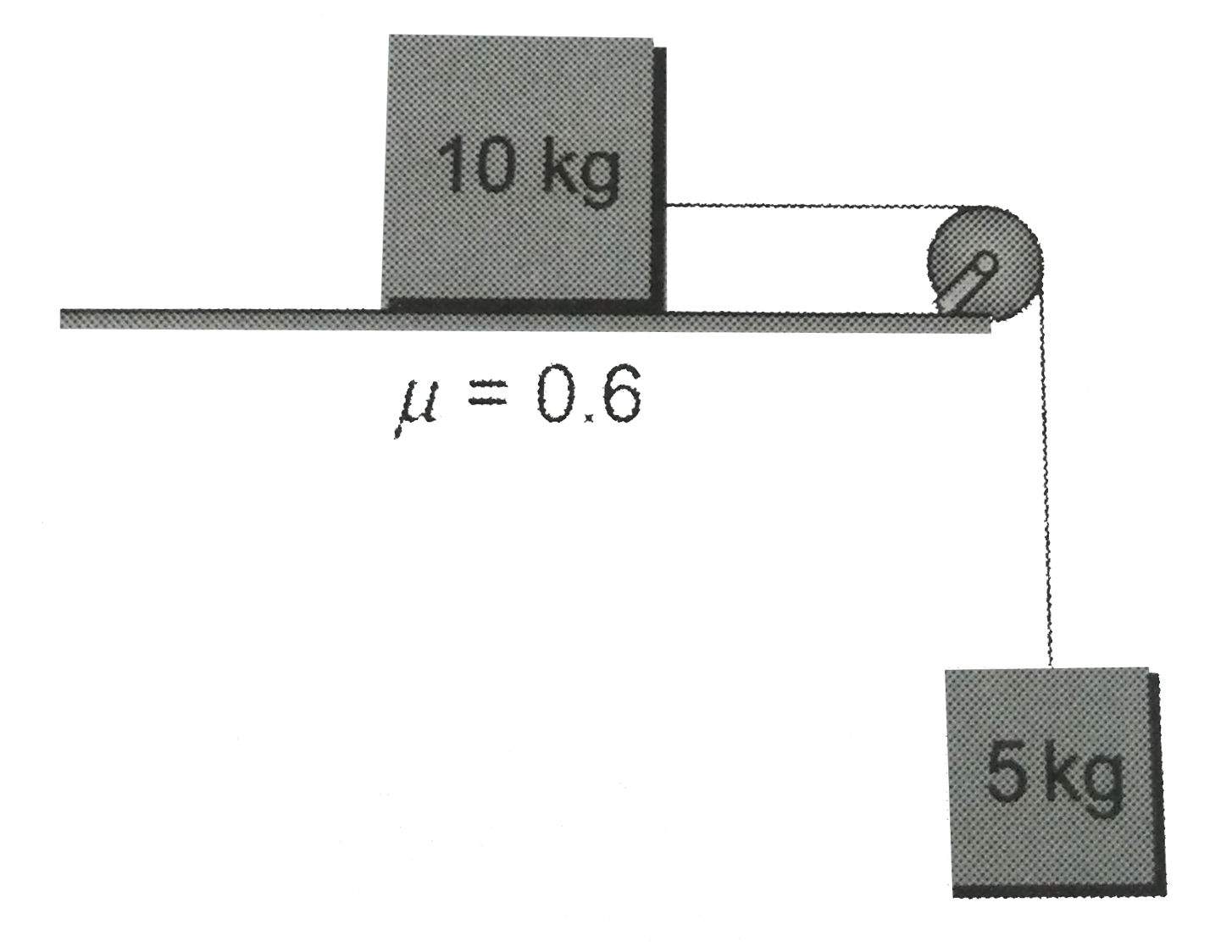
(b) 
(a) 50−T=5a (i)
↑:N−100=0⇒N=100
f=μN=0.6×100=60N
T−f=10a
T−60=10a (ii)
Solving a=−23m/s2 , but the acceleration cannot be negative . The blocks are at rest, T=50N.
In this problem , we committed a mistake , we applied the maximum value of friction force but friction is a self - adjusting force which varies from zero to a certain maximum value. Here the value of friction 50N is sufficient to prevent relative motion. When there is relative motion , friction is fully developed but when the blocks are at rest , friction or acceleration force =5g=50N , opposing force (maximum value) =60N.
(b) For block of mass 2m,
N1=2mgcos45∘=√2mg
f1=μ1N1=√23mg
Along the plane : 2mgsin45∘−T−F1=2ma
√2mg−T−√23mg=2ma (i)
For block of mass m:
N2=mgcos45∘=mg√2.
f2=μ2N2=2mg3√2
Along the plane : T−mgsin45∘−f2=ma
T−mg√2−2mg3√2=ma (ii)
Adding (i) and (ii) , we get
3ma=−2mg3√2⇒a=−g9√2=−ve
Let the block of mass m move downward by solving , acceleration comes out to be −ve , i.e. system will not move , the blocks are at rest.
OR
Let the block of mass 2m moves downward , the force which tries to accelerate the system =2mgsin45∘−mgsin45∘=mg√2.
Oppsing force =f1+f2=(√23+23√2)mg=4mg3√2
mg√2<4mg3√2 , so the system is at rest
Tension : Block of mass 2m
2mgsin45∘=T+f1
√2mg=T+√23mg
T=(√2−√23)mg=2√2mg3
Block of mass m
T=mgsin45∘+f2=mg√2+f2
f2=(2√23−1√2)=mg3√2
The friction force is fully developed , where the friction coefficient is smaller , hence we have to use the block of 2m to find tension.
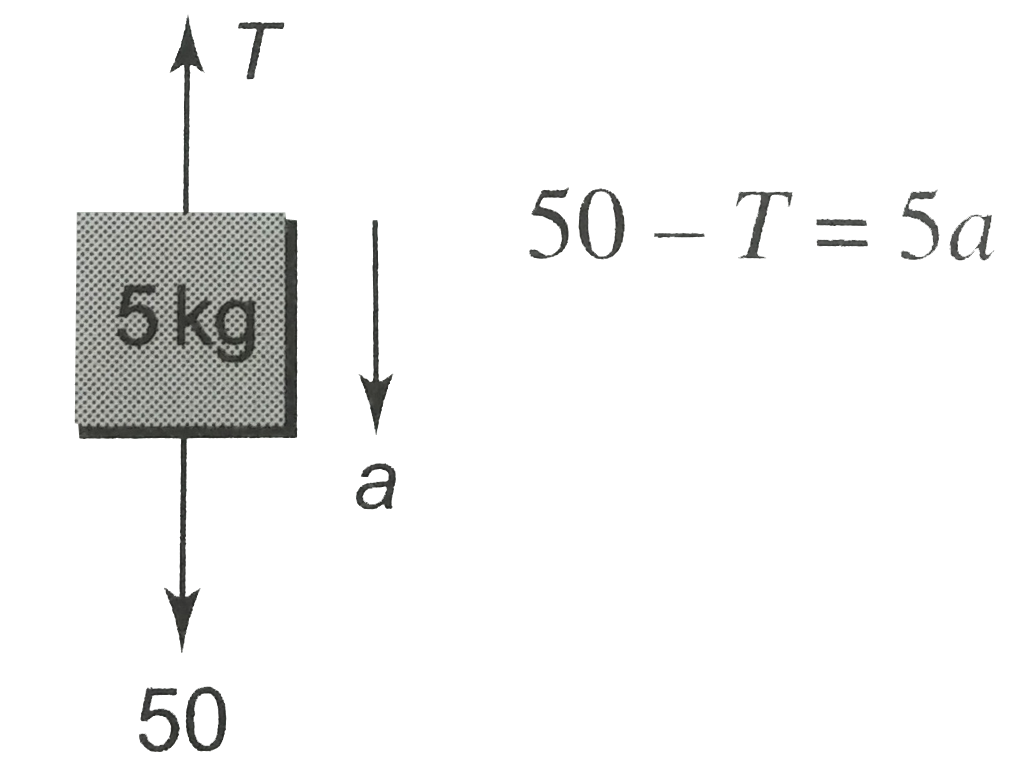
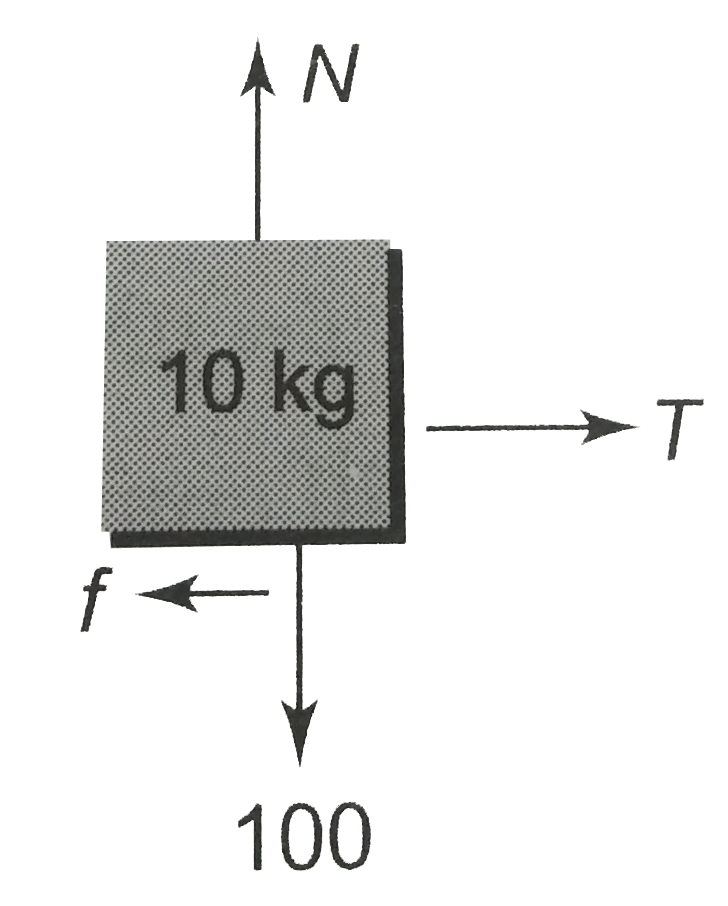

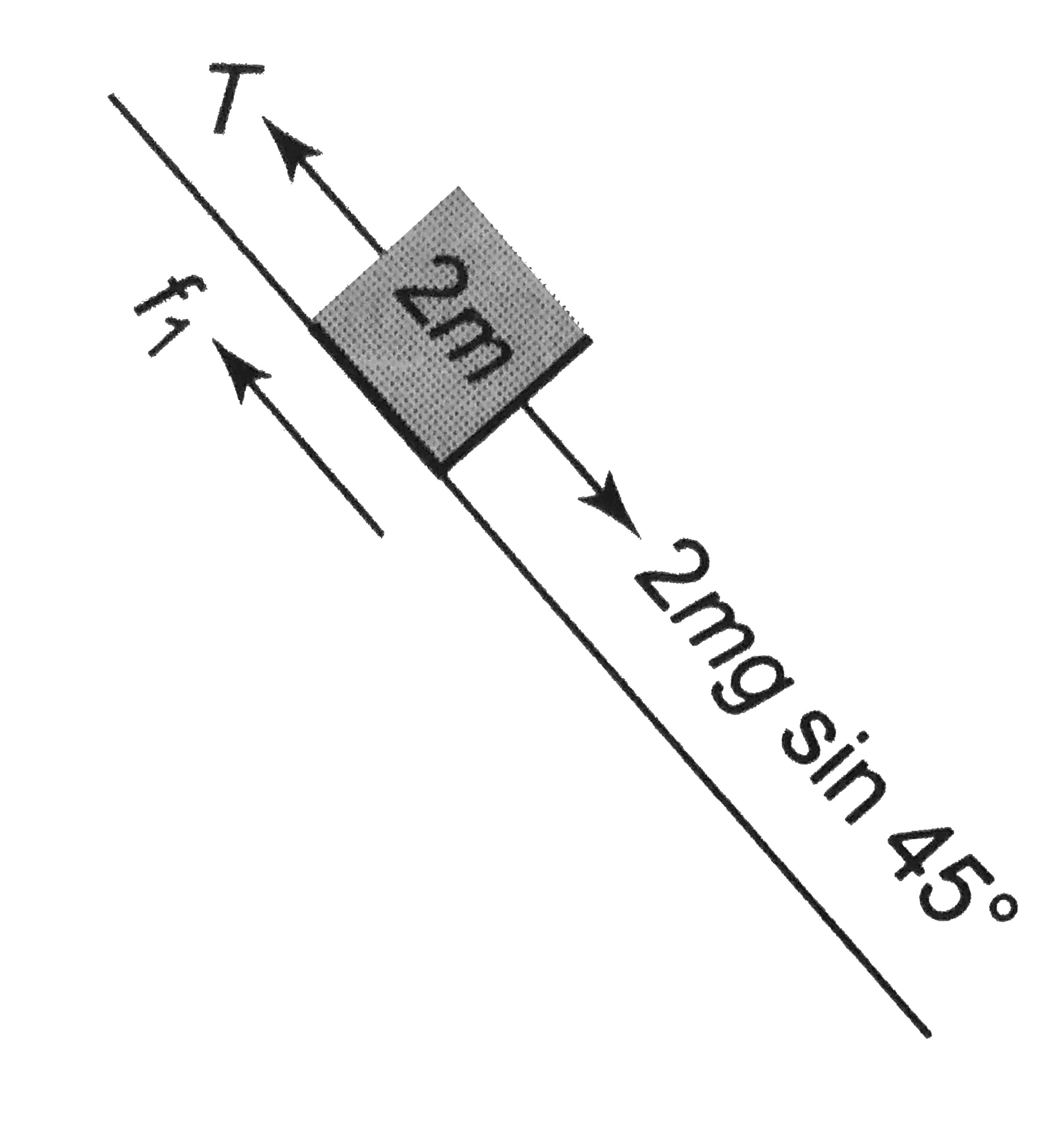
Topper's Solved these Questions
Similar Questions
Knowledge Check
The tension in the string in the pulley system shown in
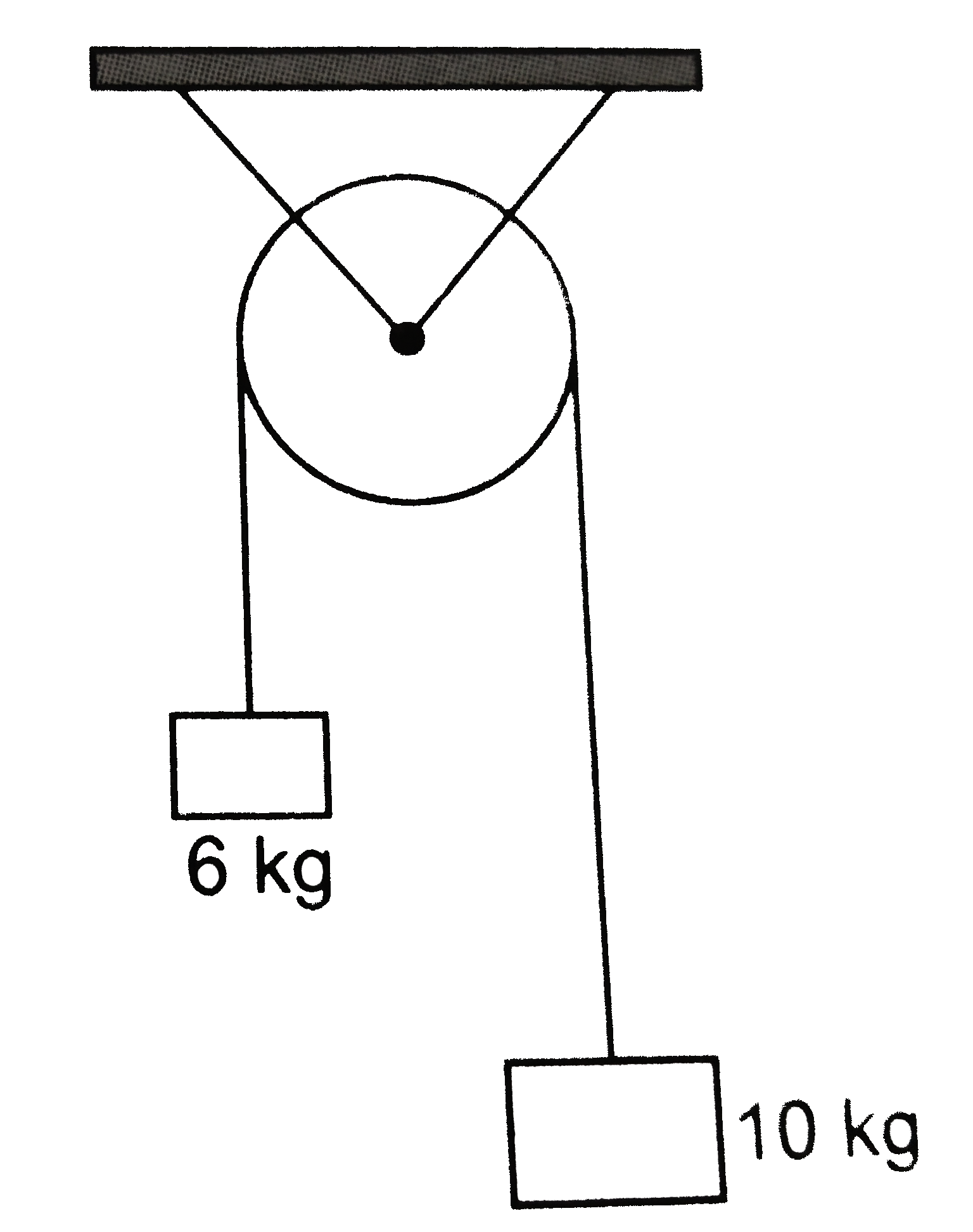 .A5.7NB7NC7.5ND73.5N
.A5.7NB7NC7.5ND73.5N
Find the acceleration blocks in fig. The pulley and the string are massless.
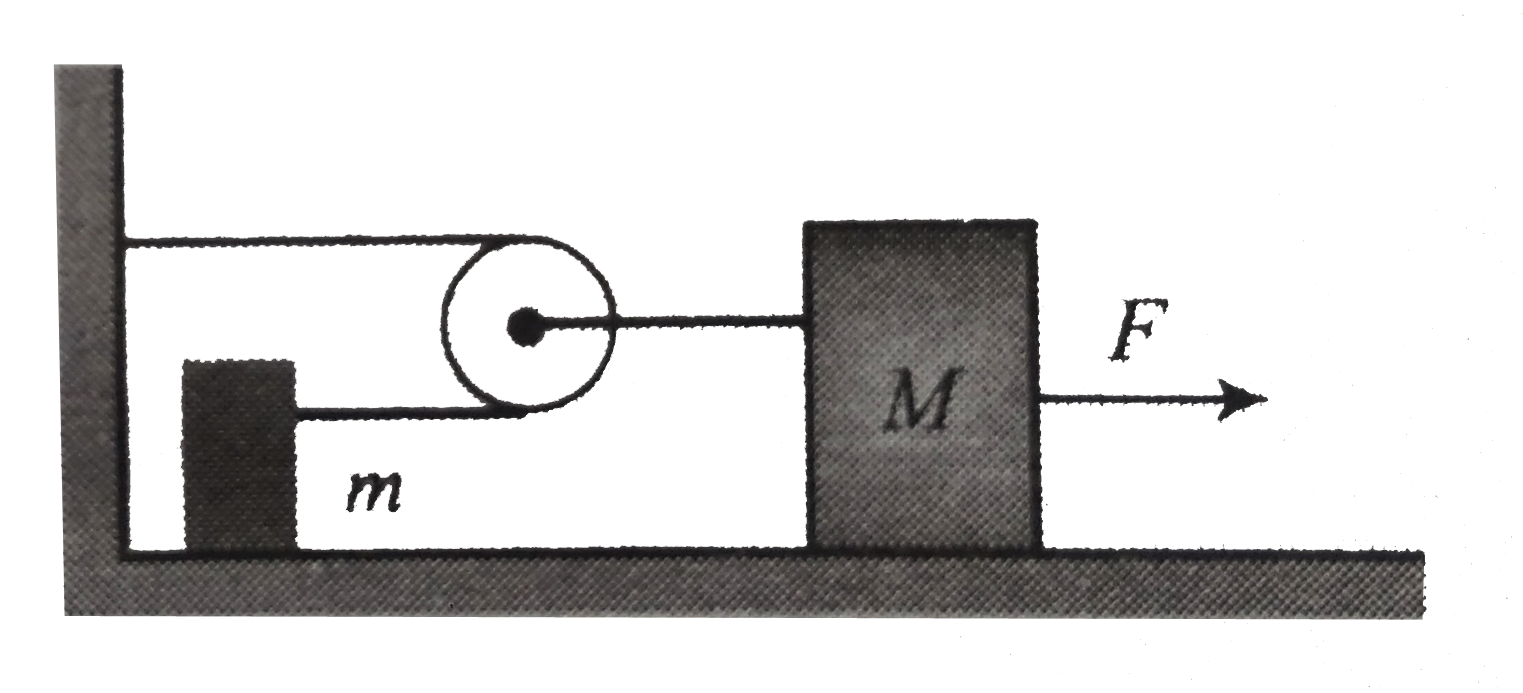
View Solution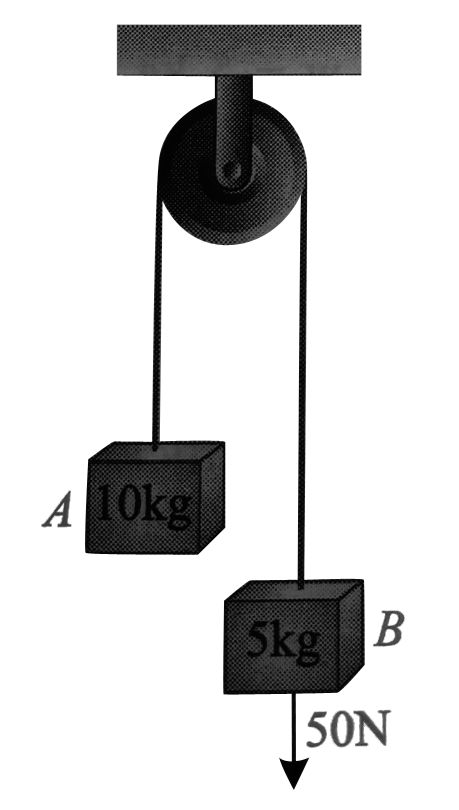
Find out the acceleration of the blocks and tensions in the strings.
View Solution
Find out the acceleration of the blocks and tensions in the strings.
View SolutionFind the acceleration of blocks in fig. The pulley and the string are massless.

View SolutionIn the arrangement shown, find the acceleration of each block, tension in the string and reaction in the pulley. The string and pulley are light (massless) (m1>m2). Neglect the friction in pulley.

View SolutionThe system shown in fig, is released from rest. Calculate the tension in the string and the force exerted by the string on the pulleys, assuming pulleys and strings are massless.

View SolutionThe system shown in fig, is released from rest. Calculate the tension in the string and the force exerted by the string on the pulleys, assuming pulleys and strings are massless.

View Solution


